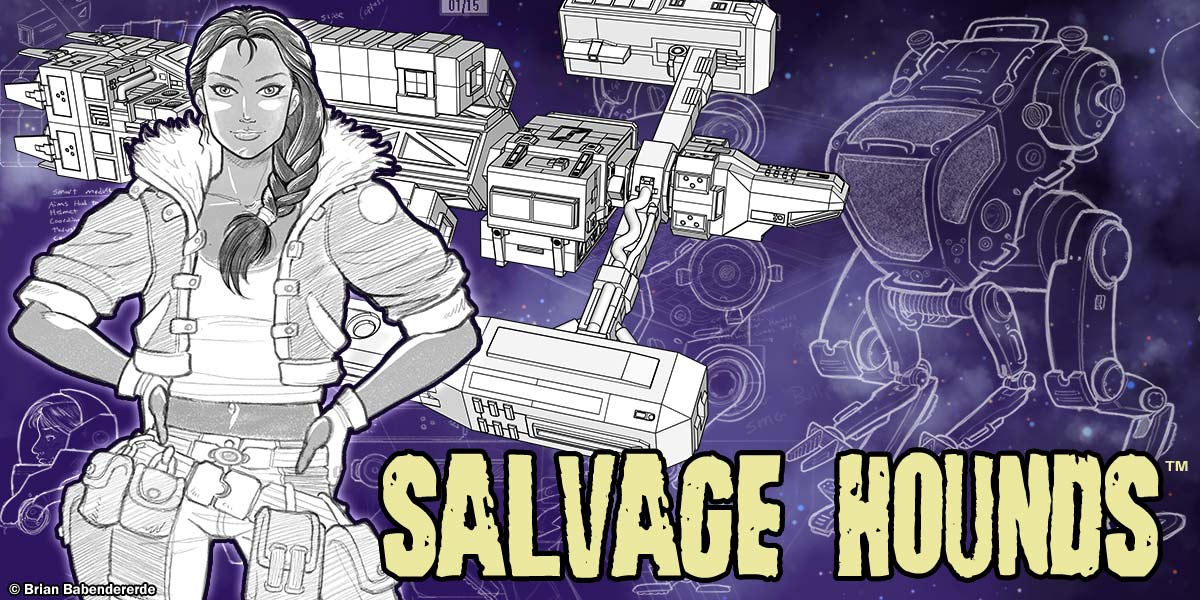(Not) To Infinity and (Certainly Not) Beyond!
One of my favorite genres growing up was hard science fiction, stories about men and women in realistic near-future settings, exploring the harsh realm of space. Even when authors like Arthur C. Clark included aliens in their stories (or the artifacts of aliens, such as 2001: A Space Odyssey, 2010: Odyssey Two, or Rendezvous with Rama) the tales were more about grounded adventure in space.
But most science fiction in games, movies, and comics was (and still is) of the “ray guns and aliens” variety. Sure, that’s cool, but I always yearned for more grounded outings in the genre. Rather than blasting at the speed of light to visit strange, new world or wild dogfights with impossible physics, the stories and settings I wanted to see and play were about smaller things: mankind set against the backdrop of near-orbit Earth or the inner solar system, “real world” stories about exploring and living in space.
Space: 1999
Back in late 1999, I almost created such a game. Septerra Core had just shipped to stores and the team began figuring out what we would work on next. We had a lot of ideas with a wide range of genres.
I was keen to finally develop the sort of “hard science fiction” story that I yearned for.
So I created a concept and sketched a cast of characters—Salvage Hounds: a crew traveling the solar system, making their living scrapping and scavenging valuable detritus from derelict ships lost in the black.
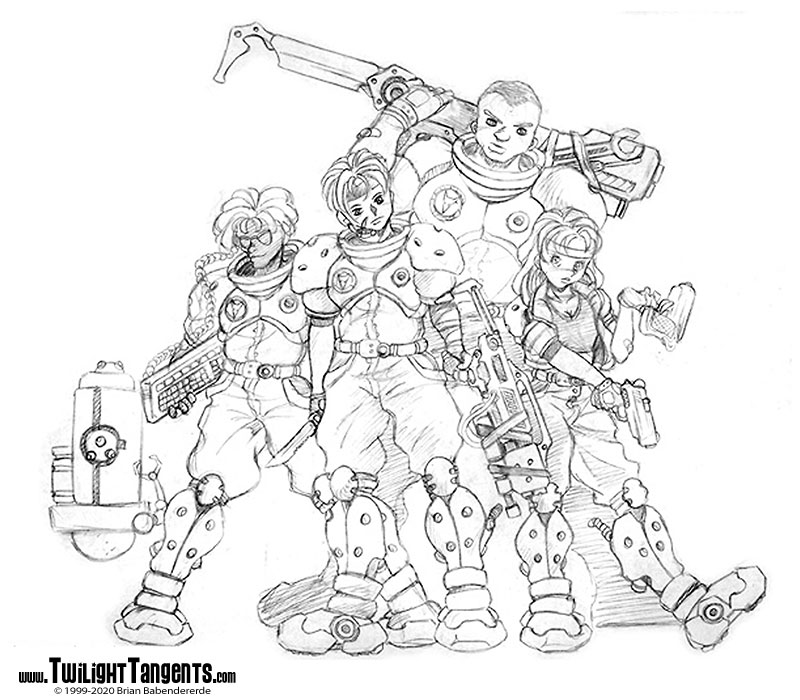
Each one of these rag tag ne’er-do-wells wasn’t a particularly upstanding citizen. As their pasts caught up with them so would trouble, like rival scavengers, pirates, corporate armies, and all manner of ruthless thugs lurking on the fringes of known space.
The player would have found new new ships to explore, navigating the interiors and exteriors of derelicts in 3D, zero-G environments via backpack thrusters. Tools like plasma cutters would open new pathways to treasure. And of course, a wide assortment of armament would be needed to defend themselves from the inevitable goons that would cross their paths, resulting in zero-g gun fights where the concept of “up” and “down” were relative.
Alas, we decided to develop other concepts into full-fledged proposals and demos. Salvage Hounds never got past the “one pager” stage.
Salvaging Salvage Hounds
A few years later, I set out to create my first comic. Soul Chaser Betty was a natural choice. It had also started out as a game concept, but because Betty took place in mid-80s America, I wouldn’t have to spend months visually designing a new fantasy world or detailing spaceships and hardware for a sci-fi setting. This more realistic setting was important—it allowed me to jump right in, concentrating on learning the medium of comics without building a whole new world.
So Salvage Hounds got filed away.
But it wasn’t forgotten. It stayed in the back of my brain for years, percolating as one of those concepts that always drew me back.
So last year I had a bright idea: why not finally do Salvage Hounds as a comic? Maybe a one-shot, maybe more? So I got out that original sketch, read some of my old proposals, and began putting together a new take on it.
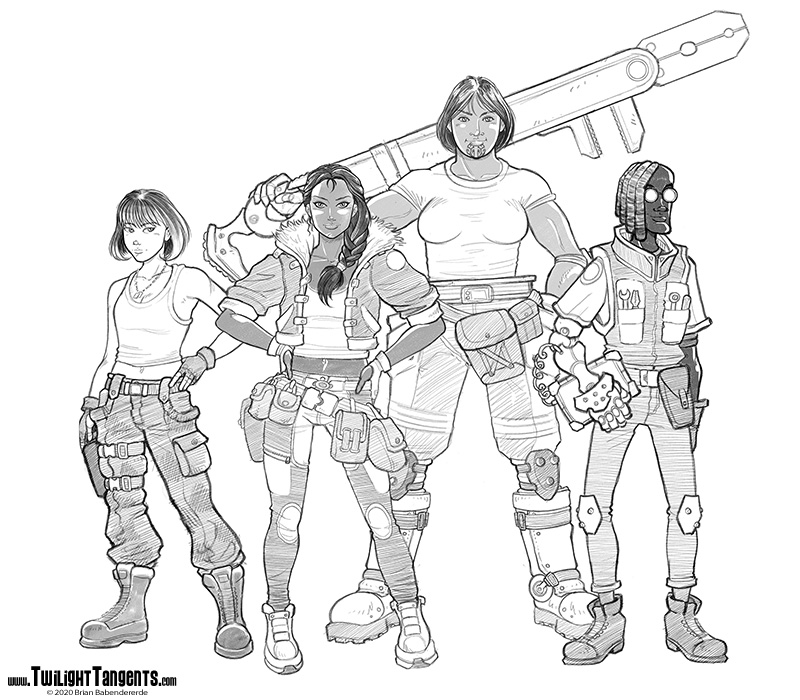
So. Much. Hardware.
But boy was I right when I figured it would take me longer to develop something like Salvage Hounds into a comic. The script has been written for a while, but I’ve since spent hundreds of hours working on creating spaceships, exo-pods, war mecha, spacesuits, and hardware like tools, weapons, robots, and portable computer terminals, to say nothing of the character designs.
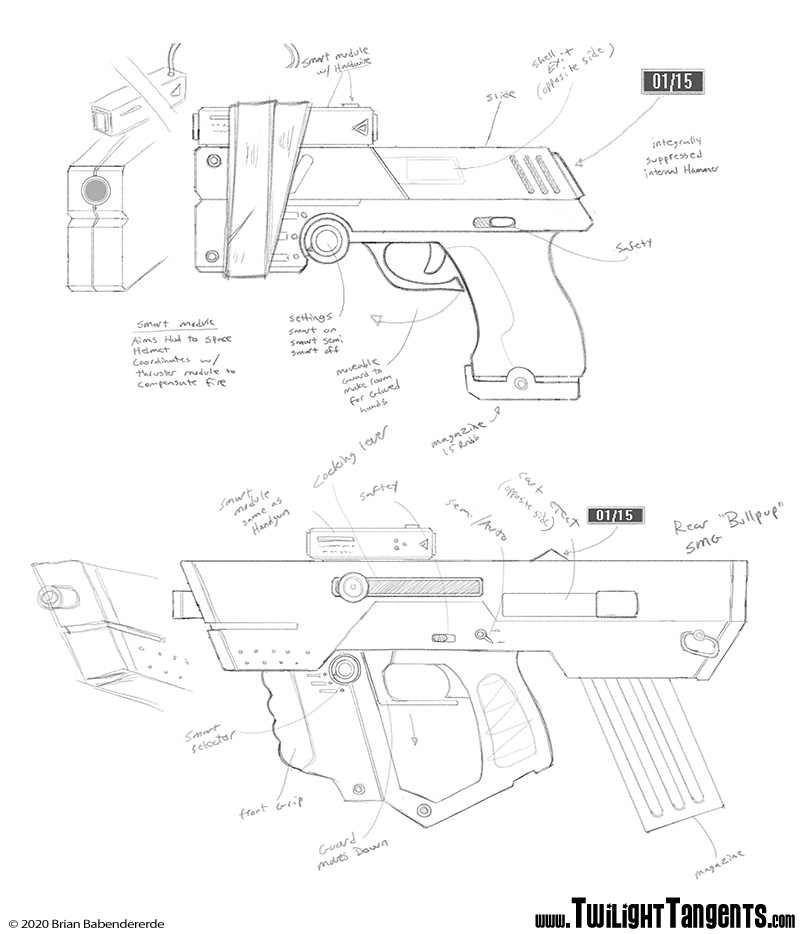
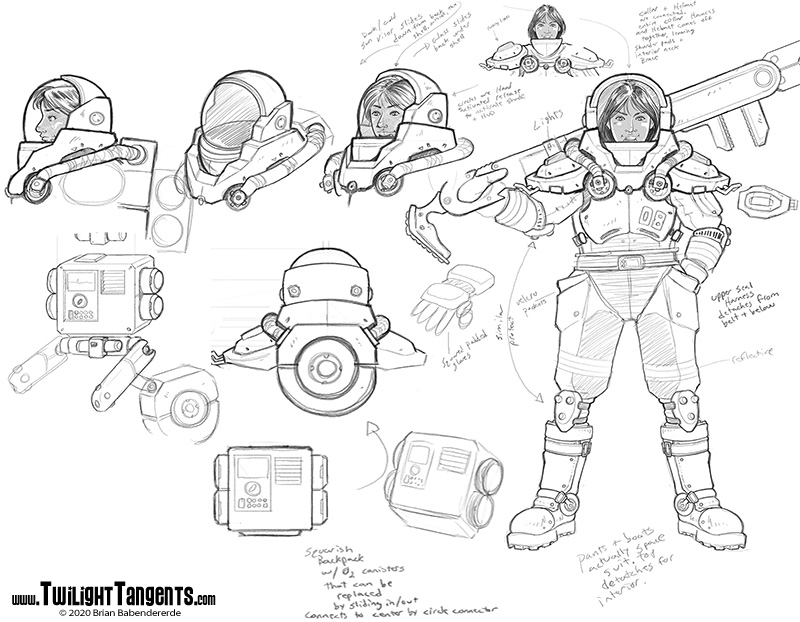
I hadn’t drawn much in the way of mecha since the mid-90s, so that was a real challenge. But, I got into it, and had a lot of fun working out all the details.
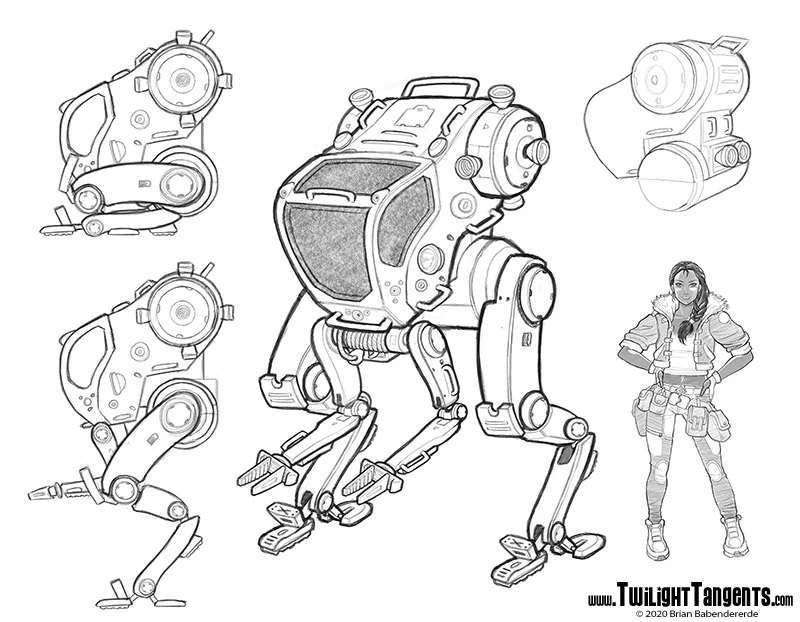
For the spacecraft, I decided to design them in 3D, which allowed me to really delve into the details of not just what these ships look like, but how they function, both as craft and living spaces. All of this hardware has been created to hopefully make sense, prizing function over form. Salvage Hounds isn’t as hardcore as something like 2001: A Space Odyssey—I’m actually aiming for something between that hallowed ground and something like Gundam’s “One Year War” setting, but erring on the side of “realistic.”
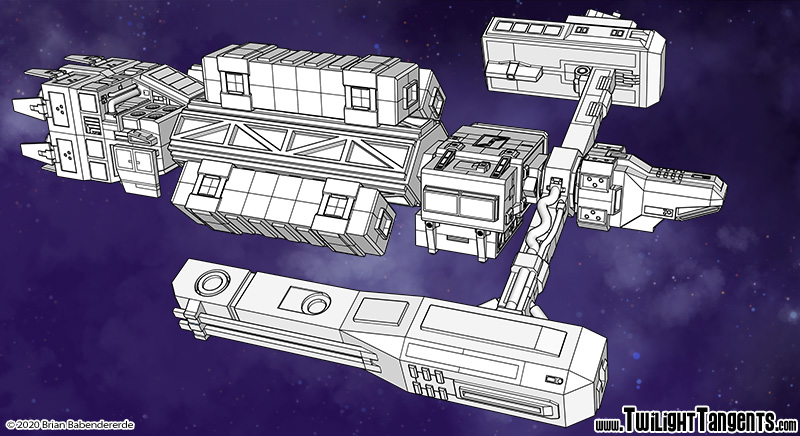
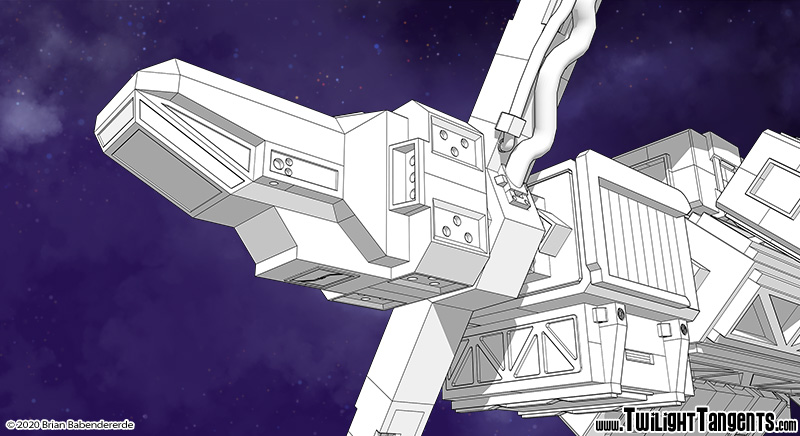
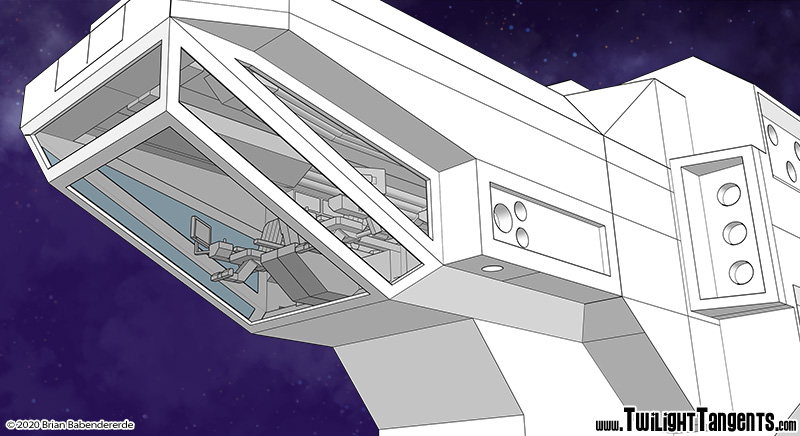
And I’m happy to report that, so far, all this front loading of design has been worth it.
Last month I began planning the art, turning my script and thumbnails into rough page layouts, complete with ship and interior renders, roughed in action, and roughed in dialogue balloons. It’s exciting to see the whole story readable from front to back, even with stick figures! I’ve started page art in earnest now, making much faster progress than I thought I would, and that’s all due to the vast amount of pre-prep that I did.
I hope you’ll join me as I delve into my process with the page art in a future post, showing how I go from script to layouts, to pencils, including how I’m incorporating 3D renders for the hardware. And be on the lookout for future posts introducing the main cast, as well as detailing some of the ships and hardware they use to get by as the Salvage Hounds!

